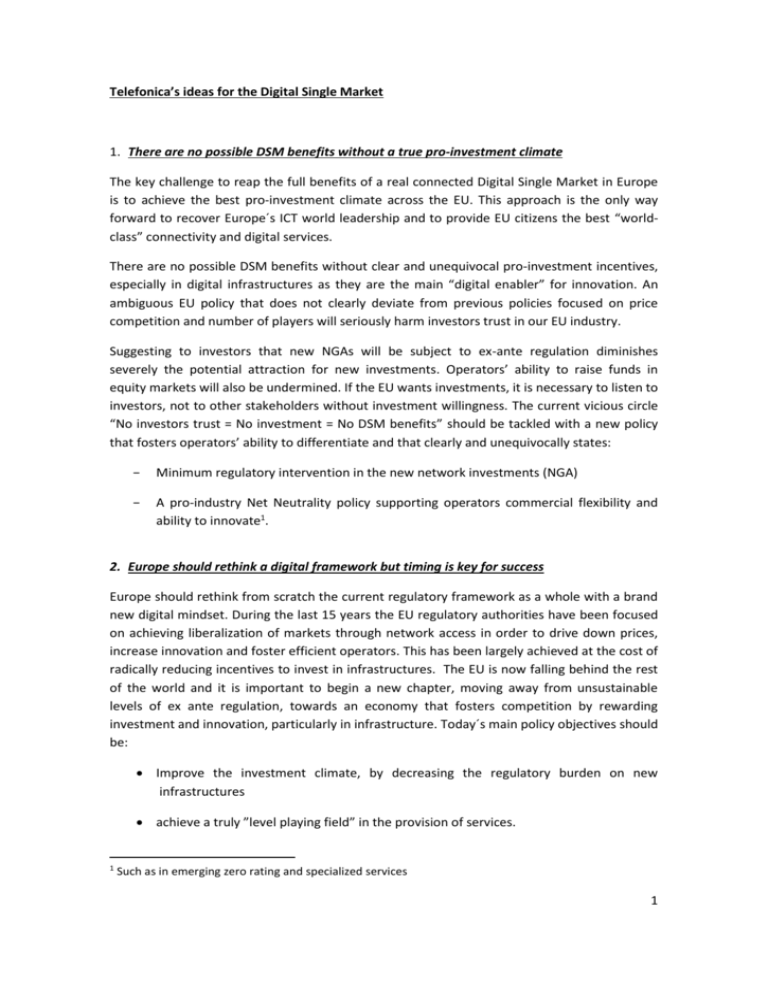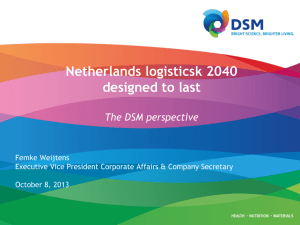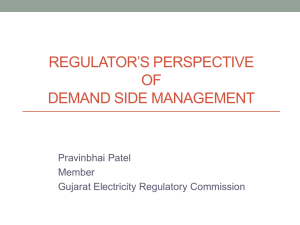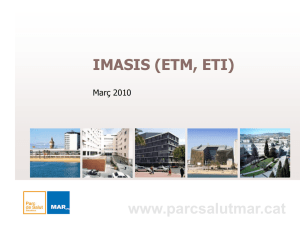dsm_consultation_tef_response_24_march2015
advertisement

Telefonica’s ideas for the Digital Single Market 1. There are no possible DSM benefits without a true pro-investment climate The key challenge to reap the full benefits of a real connected Digital Single Market in Europe is to achieve the best pro-investment climate across the EU. This approach is the only way forward to recover Europe´s ICT world leadership and to provide EU citizens the best “worldclass” connectivity and digital services. There are no possible DSM benefits without clear and unequivocal pro-investment incentives, especially in digital infrastructures as they are the main “digital enabler” for innovation. An ambiguous EU policy that does not clearly deviate from previous policies focused on price competition and number of players will seriously harm investors trust in our EU industry. Suggesting to investors that new NGAs will be subject to ex-ante regulation diminishes severely the potential attraction for new investments. Operators’ ability to raise funds in equity markets will also be undermined. If the EU wants investments, it is necessary to listen to investors, not to other stakeholders without investment willingness. The current vicious circle “No investors trust = No investment = No DSM benefits” should be tackled with a new policy that fosters operators’ ability to differentiate and that clearly and unequivocally states: − Minimum regulatory intervention in the new network investments (NGA) − A pro-industry Net Neutrality policy supporting operators commercial flexibility and ability to innovate1. 2. Europe should rethink a digital framework but timing is key for success Europe should rethink from scratch the current regulatory framework as a whole with a brand new digital mindset. During the last 15 years the EU regulatory authorities have been focused on achieving liberalization of markets through network access in order to drive down prices, increase innovation and foster efficient operators. This has been largely achieved at the cost of radically reducing incentives to invest in infrastructures. The EU is now falling behind the rest of the world and it is important to begin a new chapter, moving away from unsustainable levels of ex ante regulation, towards an economy that fosters competition by rewarding investment and innovation, particularly in infrastructure. Today´s main policy objectives should be: Improve the investment climate, by decreasing the regulatory burden on new infrastructures achieve a truly ”level playing field” in the provision of services. 1 Such as in emerging zero rating and specialized services 1 The DSM should not become a long process with lengthy debates in order to understand how to better steer the market. Market forces should take a central role reducing regulatory driven approaches. A lengthy process in order to rethink the regulatory framework will become an enormous obstacle itself as it will take almost up to 2020 to hit the market. Therefore a new, timely and future proof regulatory framework is needed to adapt telecoms to technological evolution and especially to the new digital age. Ex-ante regulation is not an objective itself, but a tool to achieve a higher social welfare, and if it cannot provide a timely and adequate response to the digital challenges, EU authorities should rely more on ex post regulation. Waiting 5 years for ex ante regulation is not an option for consumers, industry and investors. At the same time, competition law/practice should be also adapted to technological evolution, especially in streamlining the merger review process and the effects of the remedies on those mergers. Filling legislative gaps lacks ambition and will just make Europe miss the next wave of innovation and widen the gap with other regions such as US or Asia. This does not mean that the two open procedures in the TSM (roaming and Net Neutrality) should be finalized in a rush as they could be worked in parallel with the new DSM initiatives. On the other hand, a bad decision in a rush could become an obstacle in the mid/long term. In the end, what is at stake is the risk of losing EU competitiveness in the digital world which could have a very negative impact on EU growth, employment and productivity. Additionally, the EU citizens and businesses will not be able to enjoy first in class infrastructures and digital services and probably we will lose the next wave of innovation. 3. How to achieve a true pro-investment climate Within the DSM building blocks already pre-identified by the European Commission, the most relevant targets are the following: Ensuring sustainable Access and Connectivity: − Network regulation should not perpetuate forever but should adapt to reflect the level of infrastructure competition and convergence. A new deregulatory path should be clearly stated and foreseen in order to increase certainty in the markets. − Regulatory intervention should not remain focused exclusively on connectivity access and should shift to the supervision of the whole value chain to take into account the new market reality. A broader focus on economic bottlenecks wherever they lie, should be the objective, rather than focus on just one element of the value chain (access), leaving new bottlenecks in app stores, search and operating systems become entrenched and hard to remedy. − More spectrum should be available for mobile broadband services with increasing harmonization, especially avoiding national allocation criteria, new entrant 2 reservations and “spectrum taxes”, such as the escalating benchmarked reserve prices we increasingly see in EU auctions. Building trust and confidence (Consumer protection, Internet Governance…): − Trust and confidence are key for the new digital services, although the solution should be based on a light touch approach to achieve operational simplification and avoid ever increasing bureaucracy that creates significant barriers for European businesses. − In general it is necessary to reinforce Consumers’ trust and confidence on line. Currently EU citizens cannot rely on a harmonized European framework to consistently protect their rights online, the rules are too complex and fragmented amongst different sources i.e. horizontal instruments and sector specific ones. This weakens confidence in the European digital ecosystem and stops consumers from benefitting fully from the potential of the single market. A holistic approach which harmonize and modernize all the relevant rules to ensure simple and homogeneous protection to consumers is needed. − The first target is probably securing a flexible framework for the currently discussed GDPR. Key priorities here are: a regime for consent that is consumer-friendly, practically applicable and adapted to the online world. A workable definition of personal data and pseudonymous data that allows innovation by means smart data processing activities. − Transparency, information, control and accountability are principles that should be the cornerstone of a new architecture that would best protect consumers in an online environment without jeopardizing innovation. − Achieving a level playing field is also critical in this area. Sector specific regulation such as the e-privacy Directive is no longer appropriate today with the increased competition in communications. Obligations around traffic and location data should now be incorporated into the horizontal data protection framework. − Inclusion of all industry players within the scope of Network Information Security Directive (NIS) will be necessary to achieve a secure and trustworthy digital environment for customers and business. Achieving a true Level Playing Field in the creation, management and distribution of content in Europe − Regarding the Copyright regime, it is necessary to simplify and streamline the current regulatory framework, in order to adapt it to evolving technologies. − Charges or levies on some elements such as on cloud servers, links or on web browsing activities will distort the market and become a clear obstacle for technological and market progress. 3 − Creation of “digital portable life” for consumers, with special attention to the ability of users to be able use their content when changing operating systems. − The review of the Audiovisual Media Services (AVMS) Directive should lead to a decrease of operators’ obligations. OTT players provide linear or non-linear TV services subject to less obligations than traditional broadcasters and operators. Regulators should ensure a level playing field by promoting competition on equal basis. Building the Digital Economy (Industry 4.0, Cloud, Big Data, Tax…): − Digital Economy is in its early days with new business models and services appearing every day. All players along the value chain should be able to innovate, and Level Playing Field should be the guiding principle. − It is necessary to investigate new possible bottlenecks along the value chain, that may exist in mobile Operating Systems, App Stores and other digital platforms to increase user’s freedom, choice and competition. − Promote interoperable Internet applications, communication and messaging services to improve consumer experience and foster competition. − Promote Open Innovation and Open Standards to prevent that undue Intellectual Property Rights restricts innovation in the Digital Economy. − Taxes should be service and technologically neutral to avoid market distortions Promoting e-Society: − Transforming education, learning and teaching by widely adopting digital technologies and services based on Open Resources and Standards will be needed to promote eSkills. This is an area where allocation of public funds to stimulate demand would be convenient. − A Digital Inclusion Strategy should be defined to limit digital divides emerging from ICT technology penetration in our daily lives. The Strategy should be market driven and based on wide industry collaboration. The main action lnies should be the following: Education Divide: Unequal access to educational methodologies and ICT educational platforms. Health Divide: Health inequalities, including hospital infrastructure availability, well experienced practitioners, treatments, preventive diagnosis… etc. Disability and Aging Divide: Unequal social, cultural and economic inclusion due to disabilities and dependency. Application of “Design for all” principles. tools, contents, 4 Security Divide: Insufficient compliance of physical and digital security requirements, prevention policies…etc to ensure data is always kept safe. 5









